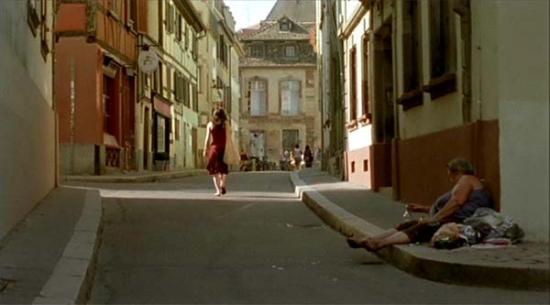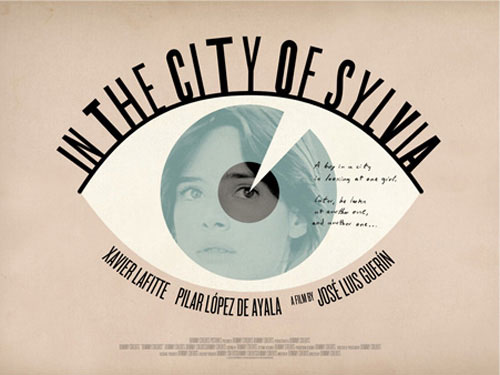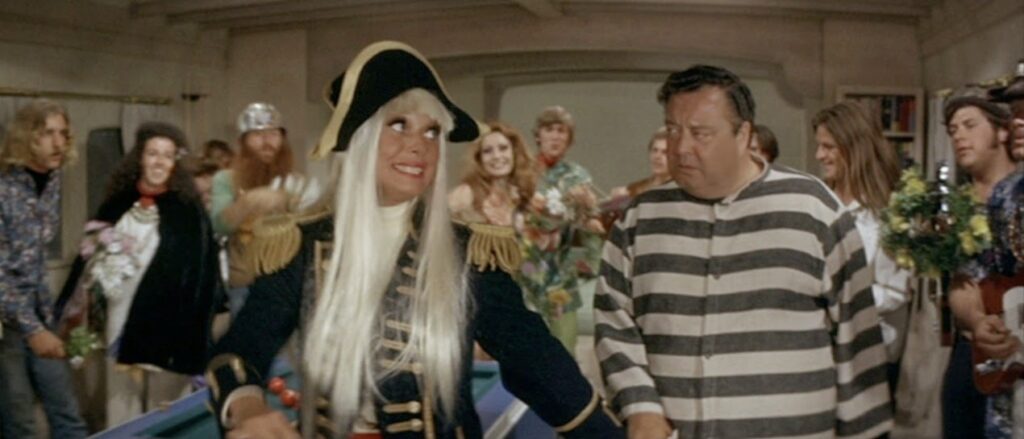From the March 12, 2008 Chicago Reader:
Relaxing at a friend’s empty country house, a reclusive New York novelist (David Thewlis) is inspired to write a new story and the next morning wakes up alongside a mysterious and seductive graduate student (Irene Jacob) who quickly becomes his muse and lover. Paul Auster, who made his directing debut with Lulu on the Bridge, provides the voice-over narration for this 2007 second feature, which was drawn and expanded from an interpolated story in his own novel, the engrossing Book of Illusions. The sad irony is that his storytelling gifts, Thewlis’s resourcefulness, and Jacob’s beauty only postpone one’s awareness that the material is too literary to work as cinema. The plot becomes increasingly arch (with the arrival of characters played by Michael Imperioli and by Auster’s teenage daughter, Sophie) and self-consciously metaphysical, and mannerism gradually overtakes visual and narrative invention. 94 min.
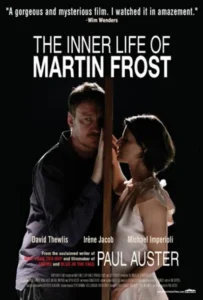 Read more
Read more
From the March 12, 2008 Chicago Reader.
Two hypnotic and haunting 2007 features by Spanish experimental filmmaker Jose Luis Guerin, about the same romantic obsession. (The reference points are W.G. Sebald’s novel Vertigo and Alfred Hitchcock’s film of the same title.) The silent Some Photos in the City of Sylvia (65 min.) uses black-and-white stills with English intertitles to recount an unseen artist’s return to Strasbourg to search for a young woman he met briefly 22 years earlier while making a Goethe-related literary pilgrimage. The far more elliptical In the City of Sylvia (84 min.) tells the same story with color, carefully articulated sound, and minimal, subtitled French dialogue; in this film the artist returns only six years after his pilgrimage. Both works are mysterious, beautiful, and primal. It’s a pity the first, an intimate study and scenario for the second, is being shown after only one screening of its more languid successor.
Read more
This was written for Artforum‘s web site, and appeared there April 3, 2009. — J.R.

A considerable part of what’s most fascinating and enjoyable about Jim McBride’s early films is also what’s most dated and therefore forgotten about them. So it seems pertinent that McBride’s first two films, David Holzman’s Diary (1967) and My Girlfriend’s Wedding (1969), an especially (and provocatively) dialectical twosome, are available on a DVD released in the UK by Second Run (full disclosure: I wrote the liner notes) but can’t be found on their home turf.

The first of these movies virtually launched the American pseudo-documentary long before postmodernist skepticism ungracefully redubbed the form “mockumentary” (and only a couple years after Peter Watkins’s more earnest pseudo-documentaries Culloden [1964] and The War Game [1965], made for the BBC). The title hero (L. M. Kit Carson) — a compulsively diaristic filmmaker who offers his own life for inspection, scaring away his girlfriend in the process — is, like McBride himself, smitten with the textures of the present moment, which ultimately makes him a doomed figure. Some 1960s audiences found him so compellingly believable that they could even accept Holzman, in the final sequence, having lost his Éclair and Nagra, reduced to recording his face and voice in a penny arcade — even though it is left unexplained how these abject substitutes could get conveyed to us on film. Read more
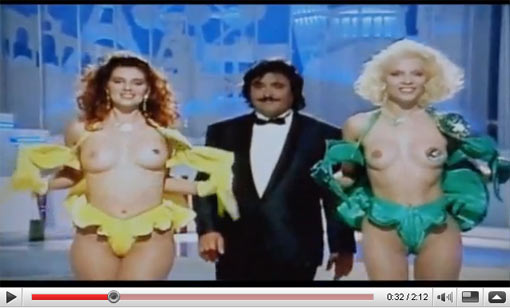
Having deliberately gone cold turkey with television since I shifted operations to Richmond, Virginia almost six weeks ago, I find it a strange experience to watch Erik Gandini’s 2009 documentary Videocracy on a small, multiregional DVD player — a hate letter of rage and disgust about Silvio Berlusconi, TV, and celebrity culture that premiered in Venice a little over a year ago and will be released on DVD in the U.S. by Lorber on September 27. (In the U.K., the DVD is being released by Second Sight.)
The reason why I’ve sworn off television, at least for the time being, is my own rage and disgust about the way that American television now caters to and encourages everybody’s rage and disgust about the state of the nation, whether this happens to be the Fox News version or the MSNBC version (the Fox News of the left), so that back in Chicago, even my respect for Rachel Maddow was getting tested nightly whenever she wound up with many of the same talking points as Keith Olbermann (or as Bill O’Reilly, for that matter). The aberration of Italian TV that’s being shown by Gandini is made to seem both better and worse: better because it seems more infatuated with euphoric and unabashedly childish fantasies, and worse because so many of these fantasies seem to consist of vulgar and sexist wet dreams of male empowerment. Read more
Written for a special retrospective issue of the French film magazine Positif at the request of editor Michel Ciment in June 2002. — J.R.

1974, the year in which I contributed a short article about -— and accompanying interview with —- Jim McBride for the avril [April] issue of Positif (no.158), was also the year in which I moved from Paris (where I had been living as a freelance writer, with mixed success, since 1969) to London (to work on the staffs of Monthly Film Bulletin and Sight and Sound at the British Film Institute): a profound cultural shift, though not nearly as radical as it was moving from London to San Diego in early 1977.

Cinematically speaking, it was the year in which I discovered two of Jacques Rivette’s greatest films — Céline et Julie vont en bateau (seen initially as a workprint, tentatively entitled Céline et Julie vont en zizanie at several private screenings at Claude Lelouch’s Club 13, thanks to my friendship with one of the screenwriters, Eduardo de Gregorio) and Out 1: Spectre (initially at the Palais de Chaillot Cinémathèque, a press show where the 16mm projectors kept breaking down repeatedly; then many more times at Studio Gît-le-Coeur, only a short hop from my sunless flat on Rue Mazarine, where, along with Gilbert Adair and Lauren Sedofsky, I would later interview Rivette for Film Comment). Read more
If memory serves, this essay, which first appeared in the Winter 1985/86 issue of Sight and Sound, and was later reprinted in Placing Movies: The Practice of Film Criticism (1995), took me at least a year to write — and maybe even longer than that — because of all the research it required. I’ve recently revised the title slightly from “GERTRUD as Nonnarrative” to “Gertrud as Nonnarrative” because my basic argument concerns the character Gertrud rather than the film as a whole. — J.R.
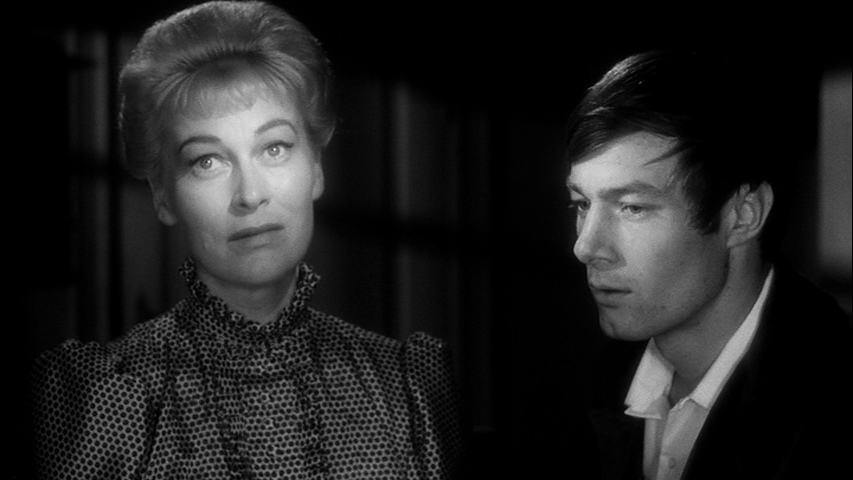
There are narrative and nonnarrative ways of summing up a life or conjuring a work of art, but when it comes to analyzing life or art in dramatic terms, it is usually the narrative method that wins hands down. Our news, fiction, and daily conversations all tend to take a story form, and our reflexes define that form as consecutive and causal — a chain of events moving in the direction of an inquiry, the solution of a riddle. Faced with a succession of film frames, our desire to impose a narrative is usually so strong that only the most ruthless and delicate of strategies can allow us to perceive anything else.
Carl Dreyer allows us to perceive something else, but never without a battle. Read more
As far as I know or can remember, the credits of only two features have credits that are sung offscreen — Pasolini’s The Hawks and the Sparrows (1966) and Preminger’s Skidoo (1968).
Pasolini’s credits come at the beginning of his feature, Preminger’s at the end of his. Pasolini’s credits are much wittier than Preminger’s.
Rather than conclude that it’s only coincidental that these two films appeared only two years apart, I’m more partial to the possibility that Preminger and/or his writers saw Pasolini’s film and then decided to have its own credits sung. But it’s also worth noting that the mid-1960s was an unusually free and reckless period when the frivolous notion of setting credits in the form of sung lyrics would have been especially feasible. [12/15/2023] Read more
Originally posted in June 2009. — J.R.

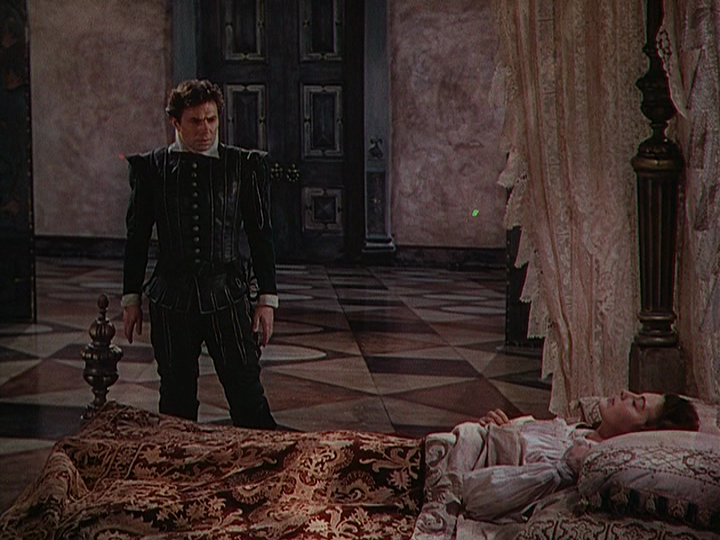
Reseeing an old favorite, Albert Lewin’s delirious Pandora and the Flying Dutchman (1951), towards the end of my penultimate day at Il Cinema Ritrovato, I’m struck once again by how its lengthy, climactic period flashback appears to replicate, anticipate, or at least closely parallel, visually as well as thematically, the murder of Desdemona by Othello in Welles’ Othello, made at almost precisely the same time. Could Lewin have seen the Welles film, or is the resemblance merely coincidental? Even if I had all the precise production information for both films, it would probably be impossible to figure out. [7/3/09]
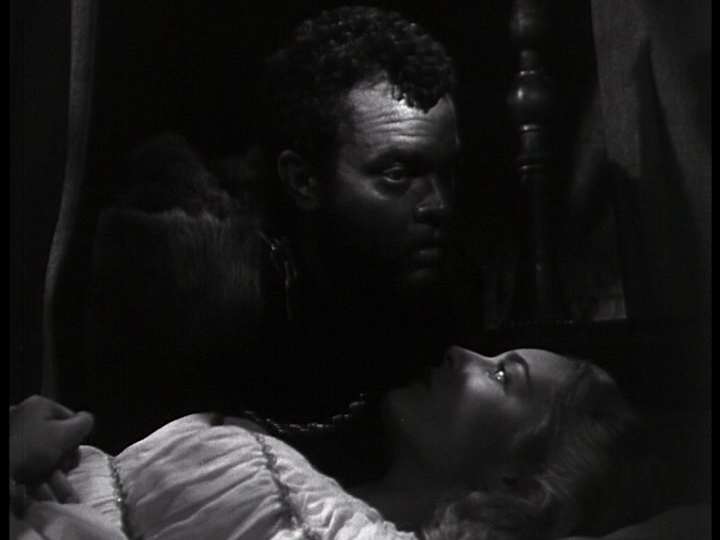
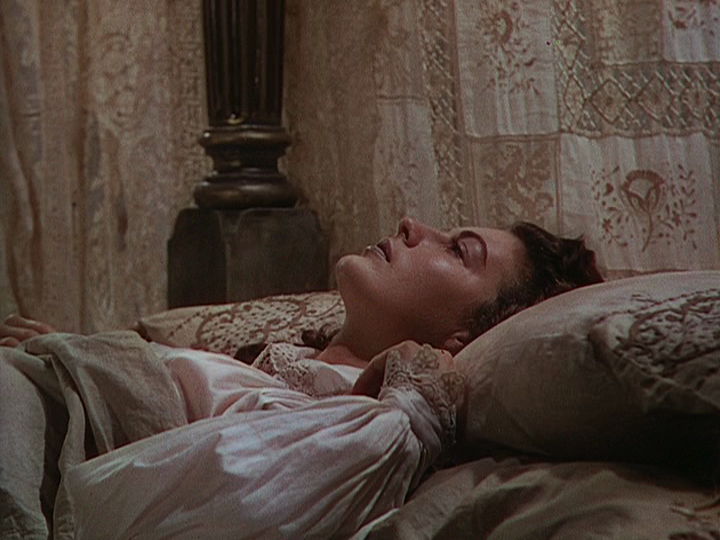 Read more
Read more
Originally posted in 2010. — J.R.
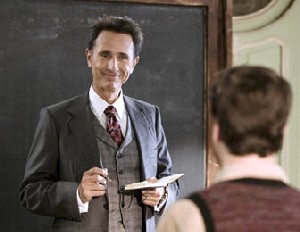

The first still above comes from writer-director Yves Hanchar’s Sans rancune!, the second from cowriter Sophie Hiet’s and director-cowriter Julie Lopes-Curval’s Mêres et filles, also known as La cuisine and Hidden Diary. Both of these highly involving 2009 features about parents and personal legacies were shown at the French Film Festival held in Richmond, Virginia last month — a sort of pedagogical as well as cultural event presented by Virginia Commonwealth University and the University of Richmond that took place over four days (March 25-28), and where I was privileged and delighted to be a guest.
These two films certainly weren’t the only interesting things I saw at the festival. (Among the more notable items were Philippe Lioet’s touching and beautifully acted Welcome, a story about the growing bond between a Calais swimming instructor and a Kurdish teenager trying to reach a girlfriend in England illegally by swimming across the English channel — a very popular film in France that was nominated for ten Césars last year but sadly won none of them; a very eclectic essay film about motorcycle racing, kids, and movies by Pierre-William Glenn, the remarkable cinematographer who shot both Truffaut’s Day for Night and Rivette’s Out 1; and, strangest of all, Le train oú ça va…, an “intimiste” and domestic 3-D short by Jeanne Guillot, whose masters thesis for La Fémis, arguing that 3-D films need not be spectacular, was translated into English and posted on the festival’s website.) Read more
This appeared, in a somewhat different form, in the April 14, 2000 issue of the Chicago Reader. –J.R.
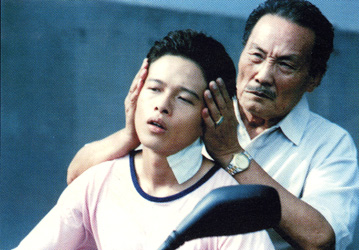
THE RIVER **** Directed by Tsai Ming-liang Written by Tsai, Yang Bi- ying, and Tsai Yi-chun With Lee Kang-sheng, Miao Tien, Lu Hsiao-ling, Chen Shiang-chyi,Chen Chao-jung, and Ann Hui.

1. I wouldn’t know how to plunge headlong into a single approach towards a film as strange and as shocking as The River — Tsai Ming-liang’s third feature, playing this week at Facets Multimedia — so a series of alternative perspectives seems desirable. The problem is, even starting off by labeling this movie a masterpiece reminds me how such an assertion in some cases amounts to a gamble more than a certainty, however much one may prefer to pretend otherwise.
What’s my alibi for this lack of confidence? First of all, a sense that when one encounters something as downright peculiar as The River, the first impulse is not to assert anything at all but to ask, “What the hell is this?” And to pretend to answer such a question, one ultimately has to fall back on one’s experience before even attempting an analysis.
In my case, I’ve experienced The River twice, both times in less than ideal circumstances: with German subtitles at the Vienna Film Festival two and a half years ago, and, just before writing this, a copy of an English commercial video, with English subtitles, that a friend was kind enough to make for me when I discovered that there wasn’t any other way I could see this film again before reviewing it. Read more
Here is an essay about Ebahim Golestan that appeared in the Chicago Reader on May 3, 2007, along with capsule reviews of three Golestan programs that showed in Chicago the same week. I posted these shortly after reseeing the remarkable and criminally neglected Brick and Mirror at the Edinburgh International Film Festival, with Golestan, now in his early 90s, both present and eloquent in speaking about his work. Note: if you hit the subtitled still below, you can see a very brief silent clip from Brick and Mirror. — J.R.

Brick and Mirror
A high point of Iran’s first new wave, this 1964 masterpiece by Ebrahim Golestan takes its title from the classical Persian poet Attaar, who wrote, “What the old can see in a mud brick, youth can see in a mirror.” The philosophical implications of this are fully apparent in Golestan’s tale of a young man who finds a baby girl in his cab and spends a night with his girlfriend debating what to do with the infant. Though this black-and-white ‘Scope film superficially resembles Italian neorealism, especially in its indelible look at Tehran street life and nightlife in the 60s, its spirit is a mix of Dostoyevsky and expressionism: minor characters periodically step forward to deliver anguished soliloquies, contributing to an overall lament both physical and metaphysical. Read more
The following was written for the Monthly Film Bulletin (April 1976, vol. 43, no. 507) — a publication of the British Film Institute, where I was serving at the time as assistant editor — and it follows most of the format of that magazine by following credits (abbreviated here) with first a one-paragraph synopsis and then a one-paragraph review. — J.R.
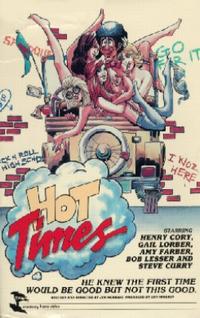
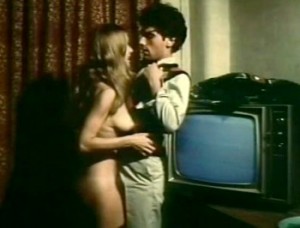
Hot Times
U.S.A., 1974
Director: Jim McBride
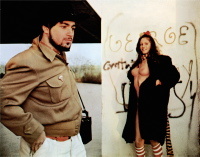
Cert—X. dist—DUK. p.c—Extraordinary Films. exec. p—William Mishkin. p—Lew Mishkin. assoc. p/p. manager/asst. d—Jack Baran. sc—Jim McBride. ph—Affonso Beato. col—Eastman Color. ed—Jack Baran. sd. rec—Nigel Noble. sd. re-rec—Jack Cooley. l.p—Henry Cory (Archie Anders), Gail Lorber (Ronnie), Amy Farber (Bette), Steve Curry (Mughead), Bob Lesser (Coach/Guru’s Voice), Clarissa Ainley (Kate, Gloria’s Mother), Bonnie Gondell (Gloria), Bette Muir (La Conchita), Jack Baran (Cab-driver Alex “Bushmaster” Mogul-muph), Lorenzo Mans (Jesús, La Conchita’s “Nookie Bookie”), Irving Horwitz [Mel Howard] (Director Potemkin), Rick Ross (Reggy), Jim McBride (Man at Elevator), Adrienne Mania (Archie’s Mother), Pious Applebaum (Dr. Read more
If memory serves, the following review, written in mid-February 2005, is the only submitted film review I ever wrote for the Chicago Reader during my more than 20 years on the staff which the paper’s editor chose not to run. I’m posting it now not in order to contest in any way her judgment in this matter — given the possible unwitting offense that this short article might have caused, it was probably sound — but for the (admittedly limited) documentary interest of such a review in its own right. For the record, my capsule review of the same movie appeared in the Reader on February 25, 2005. — J.R.
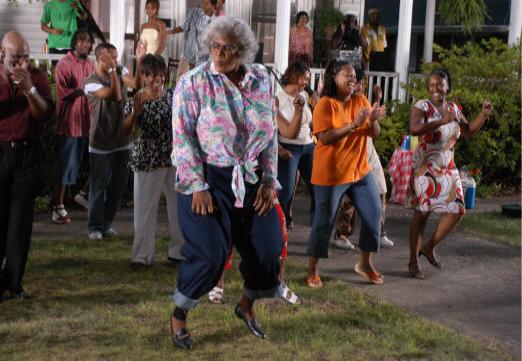
DIARY OF A MAD BLACK WOMAN *
DIRECTED BY DARREN E. GRANT
WRITTEN BY TYLER PERRY
WITH KIMBERLY ELISE, STEVE HARRIS, PERRY,
CICELY TYSON, SHEMAR MOORE, TAMARA TAYLOR,
AND LISA MARCOS
By Jonathan Rosenbaum
Once I started recovering from the shock of the hyperbolic jive of Diary of a Mad Black Woman, I had the the sensation I’d just been eavesdropping on a subculture and a franchise I previously knew nothing about —–a discourse in which a particular audience was being knowingly stroked, serviced, and gratified. As playwright, producer, performer, and sometime director, Tyler Perry belongs to that branch of ethnic theater scornfully known as the “Chitlin Circuit,” aimed almost exclusively at black audiences. Read more
From the May 10, 1991 Chicago Reader. –J.R.
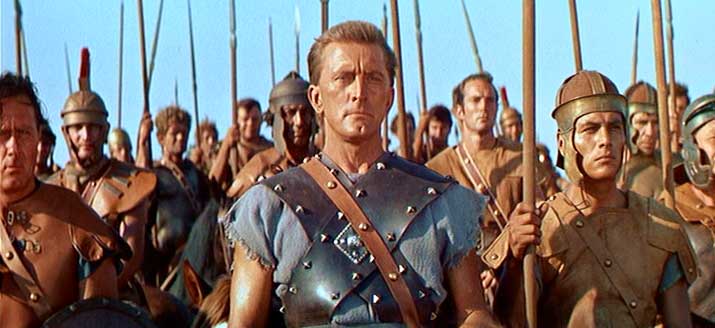
SPARTACUS
*** (A must-see)
Directed by Stanley Kubrick
Written by Dalton Trumbo
With Kirk Douglas, Jean Simmons, Laurence Olivier, Charles Laughton, Peter Ustinov, John Gavin, and John Ireland.

“It has acres of dead people, more blood and gore than you ever saw in your whole life.
“In the final scene, Spartacus’s mistress, carrying her illegitimate baby, passes along the Appian Way with 6,000 crucified men on crosses.
“That story was sold to Universal from a book written by a Commie and the screen script was written by a Commie, so don’t go to see it.”

Despite these dire warnings from gossip columnist Hedda Hopper — and another from the American Legion, which sent a letter to its 17,000 local posts urging people to boycott the movie — Spartacus, released in 1960 and reportedly the most expensive movie ever shot in Hollywood, eventually turned a profit. It was even the top money-maker of 1962 after it went into general release — thereby, I suppose, making Commie symps of all of us who went to see it. It was the Kennedy era, and the blood and gore on view were pretty tame by today’s standards; for the record, the number of crucified men — rebel slaves — while high, is a good bit shy of 6,000. Read more
From the Chicago Reader (November 1, 2007). For all its inventiveness and resourcefulness, I find the recent sequel too long and difficult to follow, but I love the appearances of Harrison Ford/Deckard and his dog. — J.R.

Blade Runner: The Final Cut |****
Directed by Ridley Scott
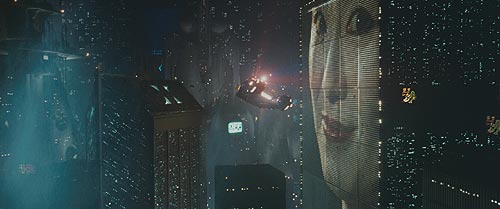
It took 25 years, but the makers of Blade Runner finally got it right. Preceded by at least six editions, five of them seen by the general public, this “final cut” is the optimal form of Ridley Scott’s 1982 masterpiece. Neither a complex revision nor a simple restoration, it’s a retooling that presents the project as it was originally conceived. Although some of the violence has been intensified and stretched out, new footage isn’t really the point. The focus instead is on redressing technical errors and making other helpful adjustments, giving the film a fully comprehensible narrative. For the first time every detail falls into place.
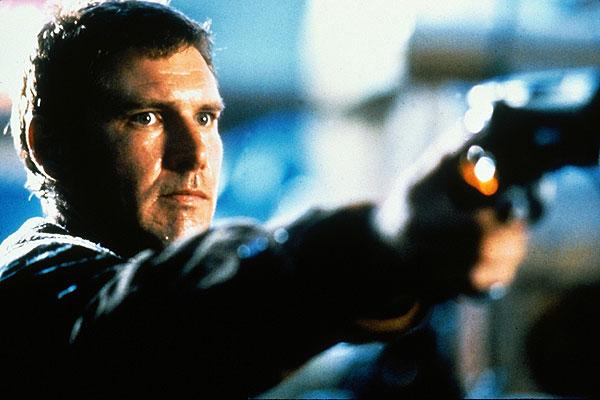
Along with the equally pessimistic and misanthropic A.I. Artificial Intelligence, Blade Runner sets the standard for movies about androids in the post-Metropolis era. It presents a dark view of humanity where the artificial beings known as replicants (who tragically have a lifespan of just four years) command most of our sympathy. Read more


